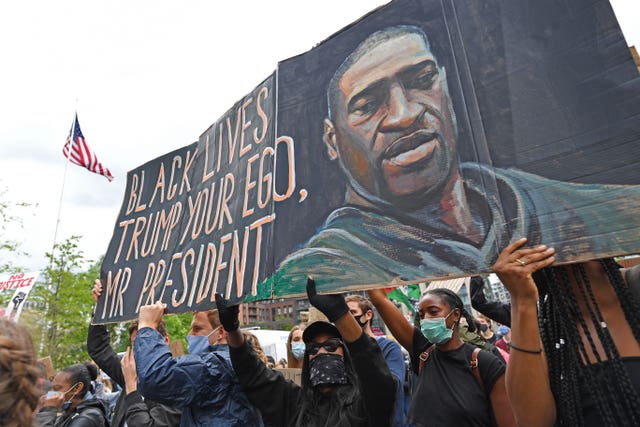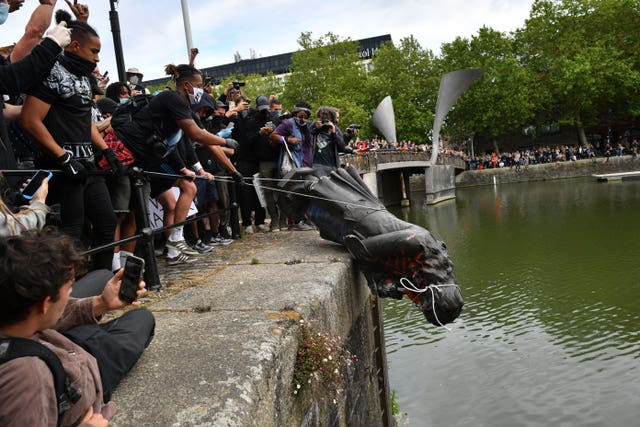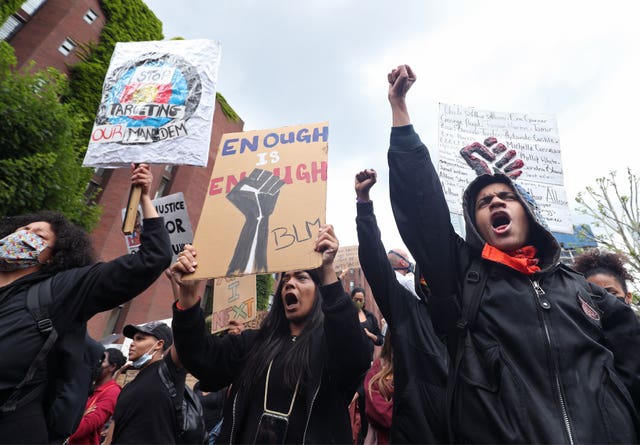Black Lives Matter: ‘National conversation’ about race is needed in the UK
A look back at the events following the death of George Floyd on May 24 in the US.

On May 25 2020, 46-year old George Floyd died after being restrained by police in Minneapolis, who held him down and pressed a knee to his neck.
In footage posted online, Mr Floyd, a black man, could be heard telling the officers that he could not breathe and calling out for his mother for eight minutes.
The incident sparked global outrage and led to both violent and non-violent protests in a movement that became known as Black Lives Matter (BLM).
Over the next few months, millions of people gathered in cities across the world to march in support of the BLM movement.

Thousands of people marched through the capital, stopping to “take the knee”, a gesture of solidarity created by American football player Colin Kapernick in 2016 to oppose racial inequality.
Star Wars actor John Boyega told a crowd in Hyde Park that those gathered were “a physical representation of our support for George Floyd”.
“You are important, your individual power, your individual right is very, very important, we can all join together to make this a better world,” he said, urging demonstrators to remain peaceful.
Other celebrities who joined marches across the country included rapper Stormzy, footballer Rio Ferdinand, boxer Anthony Joshua and former Love Island contestant Amber Gill.
Patrick Vernon, author and social commentator, believes that the BLM movement was helped in some ways by the coronavirus crisis.
“The world stood still,” he said.
“Because the world stood still, that was a time when people could reflect in Britain about issues of discrimination in Britain.
“We have never made an effort to pursue time for reflection about our historical past.”
Several historical monuments were vandalised by demonstrators during the protests.
A demonstration in Bristol culminated in the toppling of a bronze memorial to 17th century slave merchant Edward Colston on June 7 – which protesters then dumped in Bristol Harbour.

In the following weeks, counter-protests were staged in the capital by hundreds of self-proclaimed “statue defenders,” many of whom travelled from other cities by bus to attend.
More than 100 arrests were made in a single day after violent clashes between “defenders” and police, which was condemned by Boris Johnson as “racist thuggery”.
Media attention was drawn to the actions of Patrick Hutchinson, a BLM activist, who was pictured carrying an injured white man to safety.
“As part of any reflection process you’re going to have people automatically be defensive. The question is then how do you have that conversation,” he said.
“We’ve been trying to have these conversations for a long time but this is the first time that the nation got involved.
“We have been carrying this burden of discrimination for a long time and Black Lives Matter gave people permission to articulate their frustrations and anger and experiences over many years and decades.”
Mr Vernon added that “ongoing national conversation” on race was needed about both the past and the future of the UK.

“Black history is not reflected in the curriculum or the national media discourse or popular culture.
“I think we have to be realistic, we can’t remove every single statue in Britain.
“But it’s not about knocking down statues, it’s about adding new statues and ways of celebrating multi-culture Britain.”





